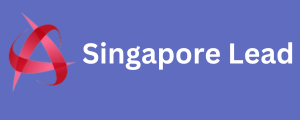Minimalist logos emphasize simplicity by using basic shapes, limited color Logo Design palettes, and clean lines. The goal is to convey the brand’s essence in a straightforward and memorable way without clutter or complexity. This design style is highly versatile and can suit many industries and brand personalities.
Benefits of Minimalist Logo Design Logos
Minimalist logos offer several benefits, including easy recognition and adaptability. Because of their simple design, they scale well on different devices and media, whether it’s a tiny app icon or a large billboard. They also tend to be timeless, avoiding trends that can quickly become outdated.
Key Elements of a Minimalist Logo
Minimalist logos usually incorporate geometric shapes, negative space, and minimal typography. Designers focus on using just logo designs service enough detail to communicate the brand identity clearly. The use of whitespace and balance plays a critical role in making these logos visually appealing.
How Designers Approach Minimalist Logos
When designing minimalist logos, designers begin by understanding the brand’s core values and target audience. They sketch how to incorporate minimalism in graphic design multiple concepts, focusing on essential shapes and symbols related to the brand. The process involves refining ideas to their purest form while ensuring they remain distinctive and meaningful.
Color Choices in Minimalist Logos
Minimalist logos often use a limited color palette, sometimes just one or two colors. Monochrome or black-and-white designs are common for their versatility. The colors chosen are usually neutral or muted to enhance the simplicity and elegance of the logo.
Typography in Minimalist Logo Design
Typography in minimalist logos is clean and straightforward. Sans-serif fonts are popular because of their modern and uncluttered europe email appearance. Customizing or modifying letters slightly can add uniqueness without compromising the minimalist aesthetic.
Applications of Minimalist Logos
Minimalist logos work well across digital platforms, print media, and product packaging. Their simple design ensures they look great in any size and context. This adaptability is especially valuable for startups and small businesses aiming for a professional yet approachable brand image.
Challenges in Designing Minimalist Logos
Although minimalist logos seem simple, creating one that effectively represents a brand can be challenging. Designers must strike the perfect balance between simplicity and distinctiveness. Too much reduction can make a logo generic, while too little can clutter the design.
Why Choose a Minimalist Logo
Choosing a minimalist logo reflects a brand’s confidence and clarity in its identity. It shows a focus on essentials and a modern approach that appeals to contemporary audiences. Minimalist logos also offer longevity and flexibility, making them a smart investment for long-term branding.
